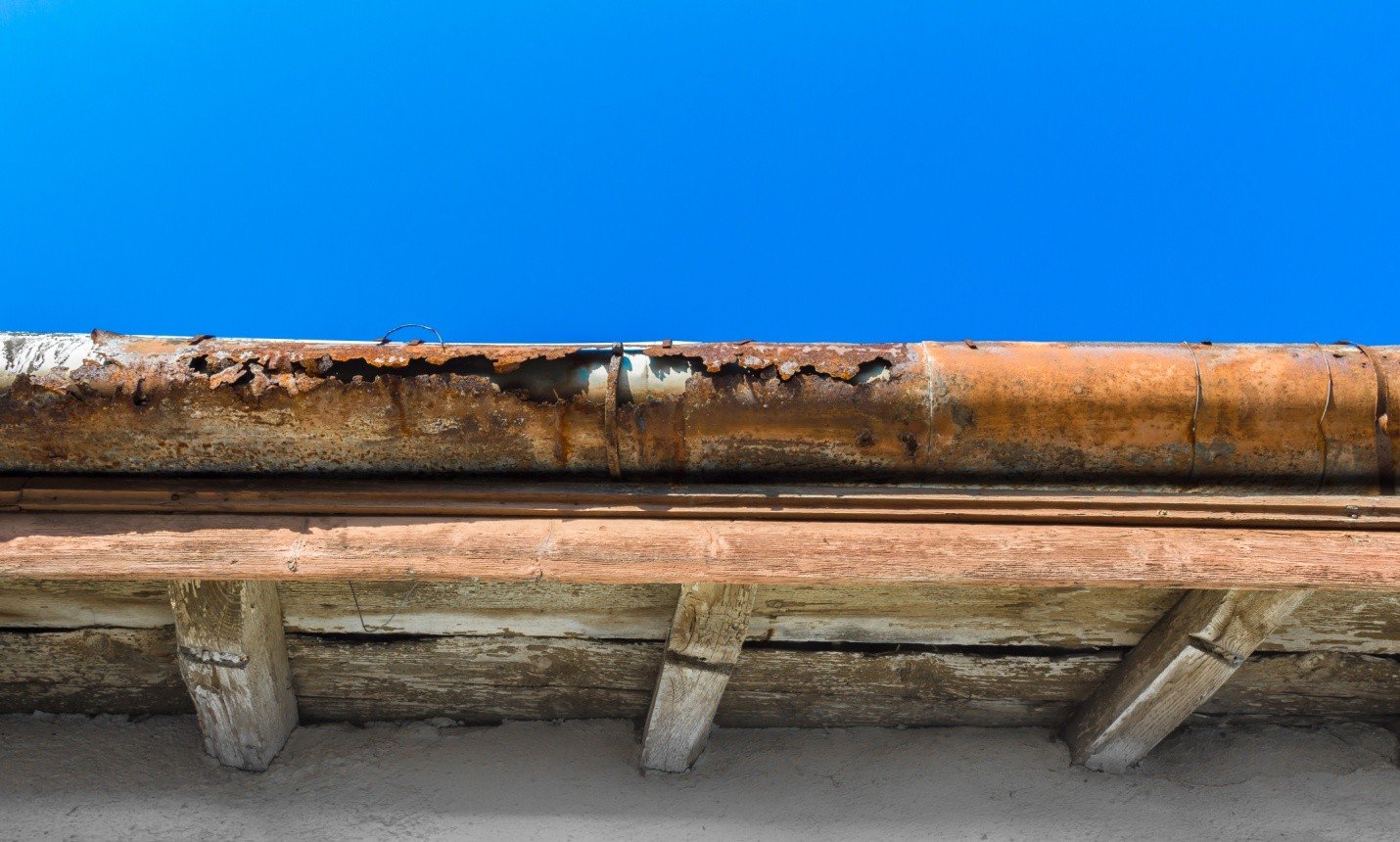Eavestrough damage does not usually grab the attention of homeowners. Probably, because it doesn’t show early signs of trouble. Because of this, they tend to just ignore it until something big happens like when it suddenly becomes heavily clogged.
Some homeowners could easily detect this problem early on because of regular eavestrough cleaning or inspections. And when they do, they can skip the pain of doing the repairs themselves or the expense of calling professional help.
Regardless of how you found out that your eavestrough is damaged, here’s a list of tips that could help you go through this repair job if you decide to do it yourself.

1. Clean And Unclog The Eavestroughs
Clogs in your gutters may cause damage to the roofing and house siding as they accumulate. Removing them is both a preventative measure and a solution.
If you want to clean and unclog your eavestroughs, you’ll need a ladder and a scraper that you can use in removing dirt, leaves, branches, and other debris that have piled up.
In some cases, you’ll see plants that have already grown in the soil buildup in your gutter. If you find one, it will be a challenge to remove because of the hardened soil and entangled roots. To solve this, you could use a water hose to soften and dissolve the soil until it ultimately flows out of the eavestroughs or becomes easier to scoop out.
Several homeowners in some cities choose to seek dependable workers for quick cleaning and unclogging. For instance, homeowners may avail of the best eavestrough repair Hamilton has to offer or the fastest gutter cleaners in Burlington if they want swift eavestrough cleanup. Yet, if you think you could do it independently and stand on the ladder to clean and unclog, you can always stick to DIY cleanup.
2. Scrape The Rust
Rust can slowly disintegrate your eavestrough into nothing. Stopping its spread could extend the lifespan of the eavestrough and reduce the effect of the damages.
If you notice rust buildup in the eavestroughs, scrape them as soon as possible. Gently remove the rust that formed with your scraper. For small rust patches, sanding them down should do the trick. However, be gentle enough as you may dislodge your gutter if you put a lot of force into it. Also, when scraping or sanding rust, wear safety goggles to avoid getting rust and other fine particles from entering your eyes and nose.
After cleaning, you can hose down the eavestroughs thoroughly. Once they dry, apply a rust-resistant primer to them.

3. Fix The Leaks
Typically, you’ll find leaks in joints—the sections where two parts of an eavestrough are connected. These joints are usually linked to one another and water-tightened with rubber gaskets or sealants.
When the joint seals have dried up, they’ll harden and eventually crack until water seeps into them through time. Then, the thickening of dirt and debris further damages the seals and the eavestroughs.
To patch the weakened and damaged joints, you can use a quick-dry sealant. If the damage is severe, you may need to refit your gutters and gaskets.
4. Re-attach Eavestroughs That Are Still In Good Condition
Dislodged sections of eavestrough don’t necessarily mean that they’re unusable anymore. Some of them may still need cleaning and function as intended.
If you decide to keep them, just double check if they’re still thick enough to withstand heavy rain and snow. In addition, examine them if they have no hidden holes or cracks that may leak water.
5. Observe How Water Flows In The Eavestrough
Checking the water movement in an eavestrough may be advisable, especially on rainy days. This process is the last test to see if you have appropriately fixed your eavestroughs. You may also recheck the connection of the eavestrough toward the downspout, as this is also a common connection that breaks loose.
Observing the water flow could help you tell whether your work is successful or not. If the sun is up, you may use a water hose just to see how it works. On the other hand, if there’s snow, you may want to carefully observe if your gutters won’t fail. As much as possible, avoid doing winter repairs as it can be dangerous. You may want to rely on professionals when winter has seriously damaged your eavestroughs.
Final Thoughts
Eavestroughs are essential parts of the house. They collect and direct rainwater from the roof toward the downspouts. Without them, pools of water may accumulate around your house and also cause water damage in your fascia boards, sidings, and even your home’s foundation. If you don’t want those things to happen, keep your eavestrough in its best condition by cleaning it regularly and performing repairs on it if necessary.











